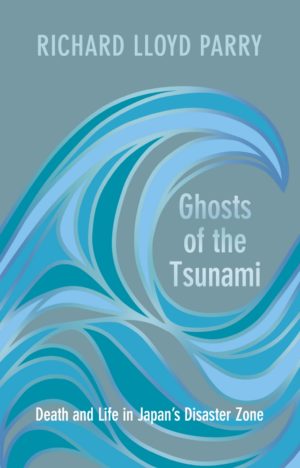 On March 11, 2011 a tsunami struck the Japanese coast north of Tokyo near the city of Sendai. Successive waves, some as high as a six story building, smashed everything they could reach. The waves did not look like water. A description of it “above the town of Natori: it begins over land rather than sea, with a view of dun winter paddy fields. Something is moving across the landscape as if it is alive. … Its head is a scum of splintered debris; entire cars bob along on its back. It seems to steam and smoke as it moves; its body looks less like water or mud than a kind of solid vapor” (11). No one knows the exact number of those who died but over 18,000. In the aftermath, ghosts began to appear.
On March 11, 2011 a tsunami struck the Japanese coast north of Tokyo near the city of Sendai. Successive waves, some as high as a six story building, smashed everything they could reach. The waves did not look like water. A description of it “above the town of Natori: it begins over land rather than sea, with a view of dun winter paddy fields. Something is moving across the landscape as if it is alive. … Its head is a scum of splintered debris; entire cars bob along on its back. It seems to steam and smoke as it moves; its body looks less like water or mud than a kind of solid vapor” (11). No one knows the exact number of those who died but over 18,000. In the aftermath, ghosts began to appear.
In Japan, many households contain altars (butsudan) “on which the memorial tablets of dead ancestors — the ihai — are displayed” (107-108). Ancestor worship is a kind of contract: “food, drink, prayers and rituals offered by descendents gratify the dead, who in turn, bestow good fortune upon the living. … Even for the unobservant, the dead play a continuing part in domestic life” (108). Before their altars, people speak to the dead and include them in their everyday actions. In Japan, “the dead are not as dead as they are in our own society. It has always made perfect sense in Japan as far back as history goes to treat the dead as more alive than we do … even to the extent that death becomes a variant, not a negation of life” (108)*. When so many die so suddenly, among them children, “the people left behind [have] no time to say goodbye. … The dead are attached to the living, and those who have lost them are attached to the dead. It’s inevitable that there are ghosts” (107)**.
Parry begins his book as an investigation into the tsunami and its aftereffects, the central mystery being what happened at the Okawa elementary school where 74 children died and 10 teachers. No other school in the tsunami zone suffered anywhere near such a catastrophe. But then it expands in scope as Parry, a long time resident of Japan, a reporter and a Japanese speaker, sees how the disaster exposed deep-set ideas about how 21st century Japan functions politically and culturally. The ghosts are but one part of a mosaic that reveals much about the place of women, the role of consensus, the stagnation of political structures, the societal toll of unimaginable loss.
One comes away from the book shaken in his western certainties about scientific materialism and our own methods for dealing with overwhelming grief. One comes away so impressed by Parry’s compassion and his acute sensitivity to his subjects. One comes away humbled by the description of a world about which one knew so little.
*(108) the scholar Herman Ooms
**(107) the Reverend Taio Kaneta